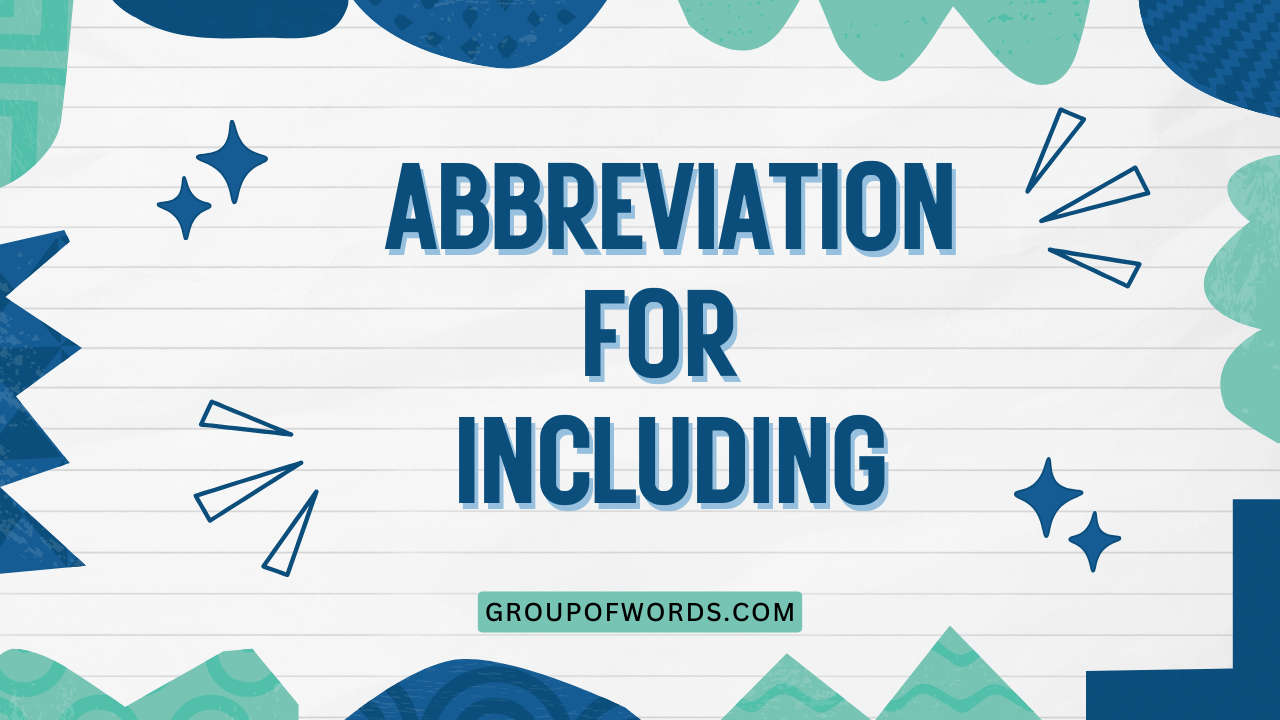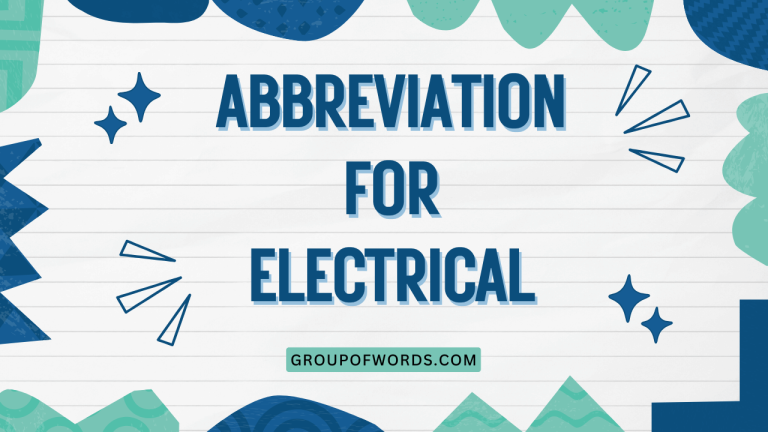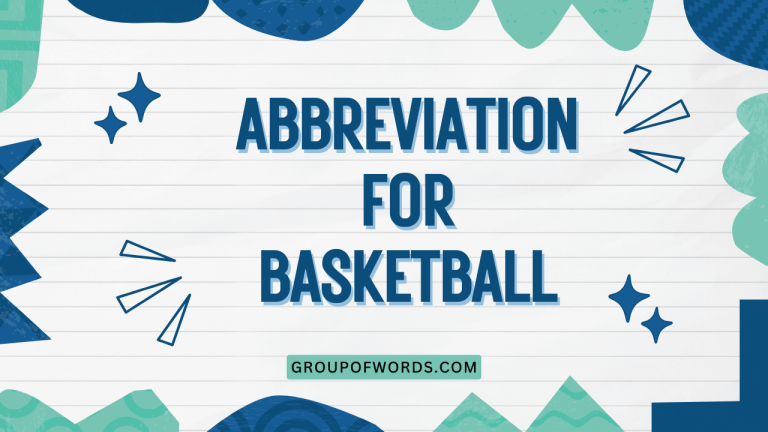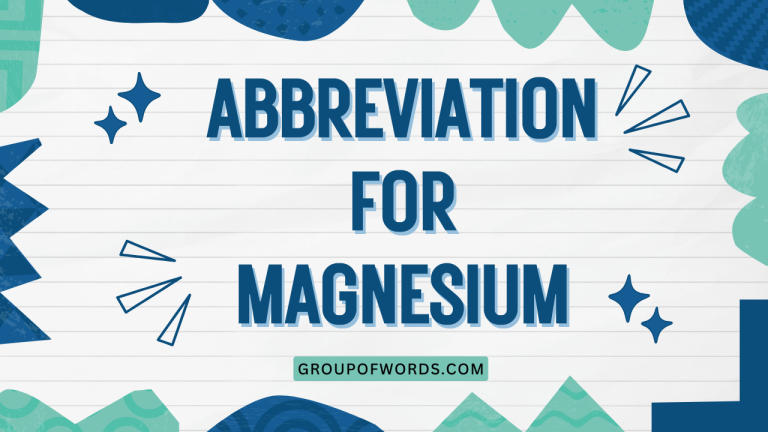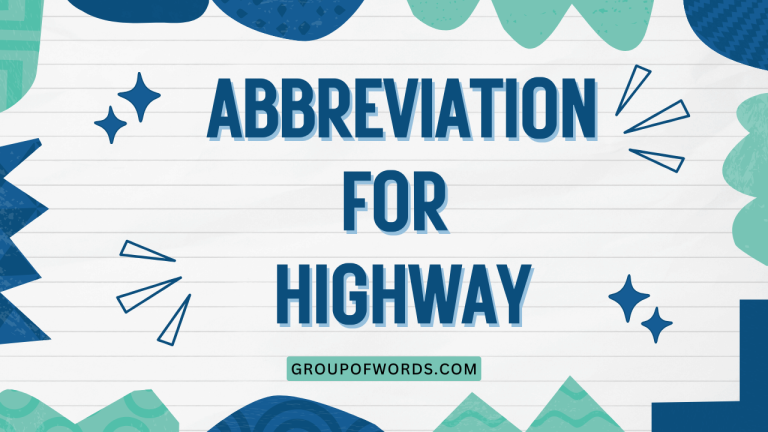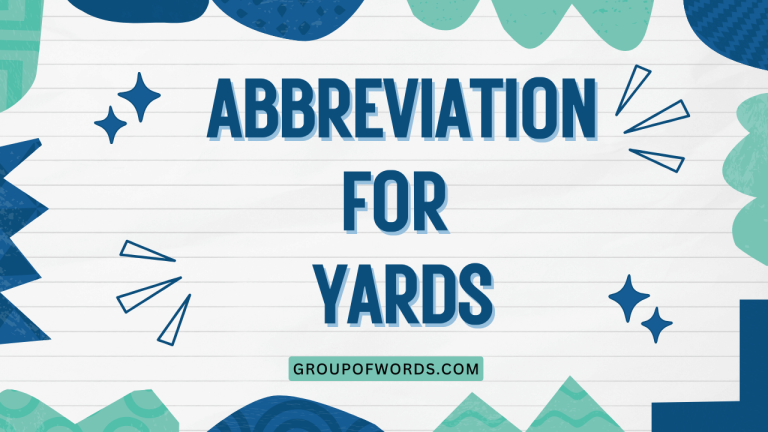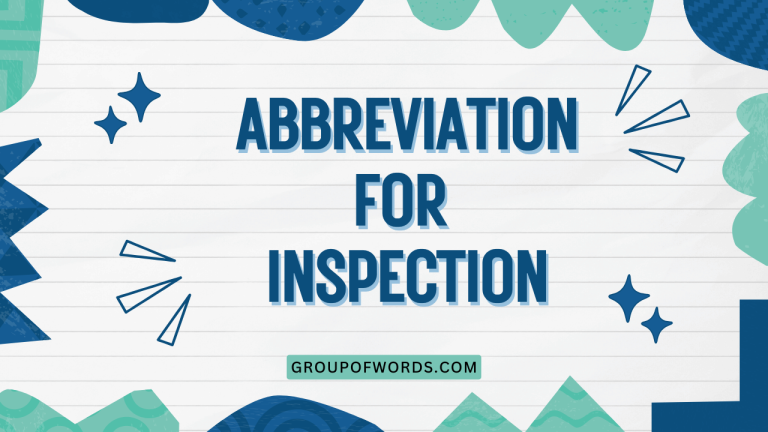“i.e.” Decoded: Mastering the Abbreviation for “Including”
Understanding abbreviations is crucial for effective communication in English, particularly in academic and professional contexts. One such common abbreviation is “i.e.,” which stands for the Latin phrase “id est,” meaning “that is” or “in other words.” While seemingly straightforward, its proper usage and differentiation from similar abbreviations like “e.g.” can often be confusing.
This article provides a comprehensive guide to mastering the abbreviation “i.e.,” covering its definition, structural breakdown, usage rules, common mistakes, and practical exercises. By the end of this guide, you will confidently and accurately use “i.e.” to enhance the clarity and precision of your writing.
Table of Contents
- Introduction
- Definition of “i.e.”
- Structural Breakdown
- Usage Rules
- Examples of “i.e.” in Sentences
- Common Mistakes with “i.e.”
- Practice Exercises
- Advanced Topics
- Frequently Asked Questions (FAQ)
- Conclusion
Definition of “i.e.”
“i.e.” is an abbreviation derived from the Latin phrase “id est.” In English, it translates to “that is,” “in other words,” or “more precisely.” Its primary function is to provide clarification or rephrase a statement in a more explicit or detailed manner. It essentially signals to the reader that what follows “i.e.” is an explanation or restatement of the preceding information.
The abbreviation “i.e.” is typically followed by a comma and is enclosed within parentheses or set off by commas, depending on the context. This punctuation helps distinguish it from the main flow of the sentence and highlights its explanatory role.
Understanding its proper usage is crucial for avoiding ambiguity and ensuring clarity in writing.
Classification
Grammatically, “i.e.” functions as an adverbial phrase, modifying the preceding clause or phrase by providing additional information. It doesn’t directly modify nouns, verbs, or adjectives but rather clarifies the entire idea being presented.
Therefore, it can be considered a discourse marker, guiding the reader’s interpretation of the text.
Function in a Sentence
The main function of “i.e.” is to clarify or explain a preceding statement. It introduces a more specific or detailed version of what has already been said.
This can be useful for defining terms, providing examples, or elaborating on complex concepts. Using “i.e.” effectively helps the writer avoid ambiguity and ensures that the reader understands the intended meaning.
Contexts of Use
“i.e.” is commonly used in various contexts, including:
- Academic Writing: To define terms or clarify concepts in research papers and essays.
- Technical Writing: To provide detailed explanations in manuals and technical documents.
- Business Communication: To ensure clarity in reports, memos, and emails.
- General Writing: To add precision and avoid misunderstandings in any type of written communication.
Structural Breakdown
The abbreviation “i.e.” consists of two lowercase letters, “i” and “e,” each followed by a period. This indicates that it is an abbreviation.
The periods are essential and should not be omitted. It is typically followed by a comma, which separates it from the explanation that follows.
The entire phrase, including “i.e.” and the explanation, is often enclosed in parentheses or set off by commas.
The structure of a sentence using “i.e.” usually follows this pattern: General Statement, (i.e., Specific Explanation). The general statement introduces the topic, and the specific explanation clarifies or rephrases it.
The explanation should be more precise or detailed than the general statement.
Punctuation Rules
The correct punctuation for “i.e.” is crucial for clarity and grammatical accuracy. Here are the key punctuation rules:
- Periods: Always include periods after both “i” and “e.”
- Comma: Usually, a comma follows “i.e.” to separate it from the explanation.
- Parentheses or Commas: The entire phrase (i.e., explanation) is often enclosed in parentheses or set off by commas.
Capitalization Rules
“i.e.” is generally written in lowercase letters. However, if it appears at the beginning of a sentence (which is rare), the “i” should be capitalized.
In most cases, though, it will be within a sentence and therefore remain in lowercase.
Placement in a Sentence
“i.e.” should be placed immediately after the statement that needs clarification. It should not be used to introduce entirely new information but rather to elaborate on something already mentioned.
Its placement should be logical and contribute to the overall clarity of the sentence.
Usage Rules
Using “i.e.” correctly involves understanding its specific purpose and adhering to certain rules. It is essential to differentiate it from other similar abbreviations like “e.g.” and to use it appropriately in different contexts.
When to Use “i.e.”
Use “i.e.” when you want to:
- Provide a more precise definition of a term.
- Rephrase a statement in simpler terms.
- Offer a more detailed explanation of a concept.
- Clarify a previous statement to avoid ambiguity.
When Not to Use “i.e.”
Avoid using “i.e.” when you want to:
- Provide examples (use “e.g.” instead).
- Introduce entirely new information.
- Summarize a previous statement (use “e.g.,” “for example,” or “such as”).
“i.e.” vs. “e.g.”
The most common confusion arises between “i.e.” and “e.g.” “i.e.” means “that is” or “in other words,” while “e.g.” stands for “exempli gratia,” meaning “for example.” Use “i.e.” to clarify or restate, and use “e.g.” to provide examples.
To illustrate the difference, consider these examples:
- “I enjoy classical music, i.e., music from the Baroque, Classical, and Romantic periods.” (Clarification)
- “I enjoy classical music, e.g., Bach, Mozart, and Beethoven.” (Examples)
Formal vs. Informal Usage
“i.e.” is generally considered more formal and is commonly used in academic and professional writing. In informal writing, it can be replaced with phrases like “that is,” “in other words,” or “specifically.” The choice depends on the tone and audience of your writing.
Examples of “i.e.” in Sentences
To solidify your understanding of “i.e.,” let’s examine various examples categorized by context. These examples will illustrate how “i.e.” is used to provide clarification and enhance the precision of written communication.
General Examples
The following table presents a range of sentences demonstrating the use of “i.e.” in general contexts. Each example shows how “i.e.” clarifies or restates a preceding statement, providing a more detailed or precise explanation.
| Sentence | Explanation |
|---|---|
| I prefer warm beverages, i.e., tea and coffee. | Clarifies the type of warm beverages preferred. |
| The project requires significant resources, i.e., time and funding. | Specifies the resources needed for the project. |
| She excels in STEM fields, i.e., science, technology, engineering, and mathematics. | Defines the STEM fields she excels in. |
| The company is focusing on sustainable practices, i.e., reducing waste and conserving energy. | Explains what sustainable practices entail. |
| He enjoys outdoor activities, i.e., hiking and camping. | Clarifies the type of outdoor activities he enjoys. |
| The recipe calls for fresh herbs, i.e., basil and oregano. | Specifies which fresh herbs are required. |
| The museum features ancient artifacts, i.e., pottery and sculptures. | Clarifies what type of ancient artifacts are showcased. |
| The seminar covers various marketing strategies, i.e., digital and traditional marketing. | Specifies the marketing strategies covered. |
| The course focuses on European history, i.e., the Renaissance and the Reformation. | Defines the specific periods of European history covered. |
| The software development process involves several stages, i.e., planning, coding, and testing. | Explains the stages involved in the software development process. |
| The legal document outlines specific terms, i.e., rights and obligations. | Specifies the types of terms outlined in the legal document. |
| The athlete needs proper nutrition, i.e., a balanced diet and hydration. | Clarifies what constitutes proper nutrition for the athlete. |
| The concert featured classical composers, i.e., Mozart and Beethoven. | Specifies examples of classical composers featured in the concert. |
| The garden is full of vibrant colors, i.e., red, yellow, and blue flowers. | Clarifies the colors that are vibrant in the garden. |
| The office provides essential supplies, i.e., pens, paper, and staplers. | Specifies examples of essential supplies provided by the office. |
| The project requires skilled professionals, i.e., engineers and architects. | Clarifies the skilled professionals required for the project. |
| The university offers various academic programs, i.e., undergraduate and graduate studies. | Specifies the academic program levels offered by the university. |
| The event includes several activities, i.e., workshops and seminars. | Clarifies what types of activities are included in the event. |
| The company provides employee benefits, i.e., health insurance and paid time off. | Specifies the types of benefits provided. |
| The research focuses on renewable energy sources, i.e., solar and wind power. | Clarifies the specific renewable energy sources the research focuses on. |
Academic Examples
In academic writing, “i.e.” is frequently used to define terms, clarify concepts, and provide detailed explanations. The following table provides examples of its use in academic contexts.
| Sentence | Explanation |
|---|---|
| Photosynthesis is the process by which plants convert light energy into chemical energy, i.e., the synthesis of glucose from carbon dioxide and water. | Provides a more detailed explanation of photosynthesis. |
| Eukaryotic cells contain membrane-bound organelles, i.e., the nucleus, mitochondria, and endoplasmic reticulum. | Clarifies which organelles are membrane-bound. |
| The concept of cognitive dissonance refers to the mental discomfort experienced when holding conflicting beliefs, i.e., the tension between knowing smoking is harmful and continuing to smoke. | Provides a specific example to clarify the concept of cognitive dissonance. |
| A dependent clause cannot stand alone as a sentence, i.e., it relies on an independent clause to form a complete thought. | Explains why a dependent clause cannot stand alone. |
| The scientific method involves empirical observation, i.e., gathering data through experimentation and measurement. | Explains what empirical observation entails. |
| The term “renaissance” refers to a period of cultural and intellectual rebirth, i.e., a revival of classical art and literature. | Clarifies the meaning of the term “renaissance.” |
| The study examined the effects of urbanization on biodiversity, i.e., the variety of life in a particular habitat or ecosystem. | Defines the term “biodiversity” in the context of the study. |
| The economic principle of supply and demand determines market prices, i.e., the interaction between the quantity of a product available and the desire for that product. | Explains the interaction between supply and demand. |
| The philosophical concept of existentialism emphasizes individual freedom and responsibility, i.e., the belief that individuals are responsible for creating their own meaning in life. | Clarifies the core beliefs of existentialism. |
| The historical period known as the Enlightenment was characterized by reason and individualism, i.e., the emphasis on human intellect and autonomy. | Explains the key characteristics of the Enlightenment. |
| Quantum mechanics deals with the behavior of matter and energy at the atomic and subatomic levels, i.e., the study of particles like electrons and photons. | Clarifies the focus of quantum mechanics. |
| Epidemiology is the study of the distribution and determinants of health-related states or events, i.e., the investigation of patterns, causes, and effects of diseases in specific populations. | Provides a detailed explanation of epidemiology. |
| A null hypothesis is a statement that there is no significant difference between specified populations, i.e., any observed difference is due to sampling or experimental error. | Explains the purpose of a null hypothesis. |
| The Hawthorne effect refers to the alteration of behavior by the subjects of a study due to their awareness of being observed, i.e., an artificial increase in productivity. | Clarifies what the Hawthorne effect entails. |
| The term “algorithm” refers to a step-by-step procedure for solving a problem, i.e., a set of rules that precisely defines a sequence of operations. | Provides a detailed explanation of the term “algorithm.” |
| Sociology is the study of human society and social interactions, i.e., the analysis of social behavior, institutions, and structures. | Clarifies what sociology entails. |
| The concept of sustainability refers to the ability to meet the needs of the present without compromising the ability of future generations to meet their own needs, i.e., balancing economic, environmental, and social considerations. | Provides a detailed explanation of sustainability. |
| A paradigm shift is a fundamental change in the basic concepts and experimental practices of a scientific discipline, i.e., a revolutionary change in thought. | Clarifies what a paradigm shift involves. |
| The concept of globalization refers to the increasing interconnectedness and interdependence of countries, i.e., the integration of economies, cultures, and societies worldwide. | Provides a detailed explanation of globalization. |
| The term “artificial intelligence” (AI) refers to the simulation of human intelligence processes by machines, i.e., the ability of computers to perform tasks that typically require human intelligence. | Clarifies what AI entails. |
Business Examples
In business communication, “i.e.” is used to ensure clarity in reports, memos, and emails. The following table provides examples of its use in business contexts.
| Sentence | Explanation |
|---|---|
| The company is implementing new cost-cutting measures, i.e., reducing travel expenses and streamlining operations. | Specifies the cost-cutting measures being implemented. |
| The marketing campaign targets a specific demographic, i.e., young adults aged 18-25. | Clarifies the target demographic of the marketing campaign. |
| The project requires a dedicated team, i.e., project managers, developers, and designers. | Specifies the roles needed for the project team. |
| The company is focusing on key performance indicators (KPIs), i.e., revenue growth and customer satisfaction. | Clarifies which KPIs are being focused on. |
| The new policy aims to improve employee morale, i.e., increasing benefits and providing more flexible work arrangements. | Explains how the new policy will improve employee morale. |
| The company is expanding its operations to new markets, i.e., Asia and South America. | Clarifies the new markets the company is expanding into. |
| The strategy includes several key components, i.e., market research and product development. | Specifies the key components of the strategy. |
| The budget includes allocations for essential resources, i.e., salaries and equipment. | Clarifies the essential resources included in the budget. |
| The company is implementing new technologies, i.e., cloud computing and artificial intelligence. | Specifies the new technologies being implemented. |
| The annual report highlights key achievements, i.e., increased sales and market share. | Clarifies the key achievements highlighted in the annual report. |
| The company is conducting due diligence, i.e., investigating the financial records and legal compliance of the target company. | Explains what conducting due diligence entails. |
| The management team is focusing on strategic alliances, i.e., partnerships with other companies to expand market reach. | Clarifies the purpose of strategic alliances. |
| The company is implementing a lean manufacturing process, i.e., eliminating waste and maximizing efficiency. | Explains the goal of implementing a lean manufacturing process. |
| The new software streamlines administrative tasks, i.e., automating data entry and report generation. | Clarifies how the software streamlines administrative tasks. |
| The HR department is focusing on employee retention, i.e., providing opportunities for professional development and career advancement. | Explains how the HR department is focusing on employee retention. |
| The marketing team is using social media platforms, i.e., Facebook, Instagram, and Twitter, to engage with customers. | Clarifies which specific social media platforms are being used. |
| The company is committed to corporate social responsibility (CSR), i.e., engaging in ethical and sustainable business practices. | Explains what CSR entails. |
| The sales team is implementing new sales techniques, i.e., consultative selling and relationship building. | Clarifies which specific sales techniques are being implemented. |
| The customer service department is focusing on improving response times, i.e., reducing the time it takes to address customer inquiries. | Explains how the customer service department is improving response times. |
| The company is restructuring its departments, i.e., consolidating teams and eliminating redundant positions. | Clarifies the actions during the company’s restructuring. |
Common Mistakes with “i.e.”
Even with a clear understanding of its definition and usage rules, common mistakes can still occur when using “i.e.” Addressing these mistakes will help you ensure accuracy and clarity in your writing.
Mistaking “i.e.” for “e.g.”
The most frequent error is confusing “i.e.” with “e.g.” Remember, “i.e.” means “that is” or “in other words,” while “e.g.” means “for example.” Using one in place of the other can significantly alter the meaning of your sentence.
Incorrect: I enjoy fruits, i.e., apples, bananas, and oranges.
Correct: I enjoy fruits, e.g., apples, bananas, and oranges.
Correct: I enjoy tropical fruits, i.e., fruits that grow in warm climates.
Incorrect Punctuation
Omitting the periods or the comma after “i.e.” is a common punctuation error. Always include the periods and the comma to maintain grammatical correctness.
Incorrect: The project requires resources ie time and funding.
Correct: The project requires resources, i.e., time and funding.
Unnecessary Use
Using “i.e.” when it is not needed can make your writing seem overly formal or convoluted. Only use it when clarification is genuinely necessary.
Unnecessary: The meeting will be held on Monday, i.e., the first day of the week.
Better: The meeting will be held on Monday.
Introducing New Information
“i.e.” should not be used to introduce entirely new information but rather to clarify or restate something already mentioned.
Incorrect: I went to the store, i.e., I bought milk and bread.
Correct: I went to the store to buy essential groceries, i.e., milk and bread.
Practice Exercises
To reinforce your understanding of “i.e.,” complete the following practice exercises. These exercises will test your ability to use “i.e.” correctly in various contexts.
Provide the correct sentences in the answer section below.
Exercise 1: Fill in the Blanks
Fill in the blanks with “i.e.” or “e.g.” as appropriate.
| Question | Answer |
|---|---|
| I enjoy watching sports, ______ basketball and soccer. | e.g. |
| The report highlights key findings, ______ the correlation between exercise and mental health. | i.e. |
| She is proficient in several programming languages, ______ Python and Java. | e.g. |
| The company is focusing on renewable energy sources, ______ solar and wind power. | e.g. |
| The project requires significant investment, ______ funding and personnel. | i.e. |
| The menu features vegetarian options, ______ salads and pasta dishes. | e.g. |
| The seminar covers various marketing strategies, ______ digital and traditional marketing. | i.e. |
| The course focuses on European history, ______ the Renaissance and the Reformation. | i.e. |
| The software development process involves several stages, ______ planning, coding, and testing. | i.e. |
| The legal document outlines specific terms, ______ rights and obligations. | i.e. |
Exercise 2: Correct the Sentences
Correct the following sentences, which may contain errors in the use of “i.e.” or “e.g.”
| Question | Corrected Sentence |
|---|---|
| I like to eat healthy foods, i.e., pizza and ice cream. | I like to eat healthy foods, e.g., fruits and vegetables. |
| The company is focusing on cost reduction, e.g., reducing expenses. | The company is focusing on cost reduction, i.e., reducing expenses. |
| The study examined the effects of exercise, i.e., running, swimming, and cycling. | The study examined the effects of exercise, e.g., running, swimming, and cycling. |
| The project requires skilled professionals, e.g., project management skills. | The project requires skilled professionals, i.e., project management skills. |
| The course covers various topics, i.e., grammar, vocabulary, and pronunciation. | The course covers various topics, e.g., grammar, vocabulary, and pronunciation. |
| The company provides employee benefits, e.g., health insurance. | The company provides employee benefits, i.e., health insurance. |
| The research focuses on renewable energy sources, e.g., solar and wind power. | The research focuses on renewable energy sources, e.g., solar and wind power. |
| The annual report highlights key achievements, e.g., increased sales. | The annual report highlights key achievements, i.e., increased sales. |
| The company is implementing new technologies, e.g., cloud computing. | The company is implementing new technologies, i.e., cloud computing. |
| The new policy aims to improve employee morale, e.g., increased benefits. | The new policy aims to improve employee morale, i.e., increased benefits. |
Exercise 3: Sentence Completion
Complete the following sentences using “i.e.” to provide a clarification or explanation.
| Question | Completed Sentence |
|---|---|
| The project requires careful planning, _______________. | The project requires careful planning, i.e., a detailed schedule and resource allocation. |
| The company is committed to sustainability, _______________. | The company is committed to sustainability, i.e., reducing its carbon footprint and promoting eco-friendly practices. |
| The study focuses on cognitive processes, _______________. | The study focuses on cognitive processes, i.e., attention, memory, and problem-solving. |
| The new software streamlines operations, _______________. | The new software streamlines operations, i.e., automating tasks and improving efficiency. |
| The course covers advanced topics, _______________. | The course covers advanced topics, i.e., quantum mechanics and relativity theory. |
| The company values innovation, _______________. | The company values innovation, i.e., encouraging new ideas and investing in research and development. |
| The study examines social behavior, _______________. | The study examines social behavior, i.e., interactions, norms, and group dynamics. |
| The new policy promotes work-life balance, _______________. | The new policy promotes work-life balance, i.e., flexible hours and remote work options. |
| The company supports employee development, _______________. | The company supports employee development, i.e., training programs and mentorship opportunities. |
| The research investigates environmental factors, _______________. | The research investigates environmental factors, i.e., pollution, climate change, and deforestation. |
Advanced Topics
For advanced learners, understanding the nuances of “i.e.” in more complex contexts can further enhance your writing skills. These advanced topics delve into subtle distinctions and specific usage scenarios.
“i.e.” within “i.e.”
While rare, it is possible to use “i.e.” within another “i.e.” statement. In such cases, ensure clarity by using appropriate punctuation and phrasing to avoid confusion.
Example: The project requires significant resources (i.e., financial support, i.e., funding for personnel and equipment).
Multiple “i.e.” in a Sentence
Using multiple “i.e.” phrases in a single sentence is generally discouraged, as it can make the sentence cumbersome and difficult to read. If necessary, rephrase the sentence to improve clarity.
Cumbersome: The report highlights key findings (i.e., increased sales, i.e., a 20% rise in revenue, i.e., due to new marketing strategies).
Better: The report highlights key findings, specifically a 20% rise in revenue due to new marketing strategies, indicating increased sales.
“i.e.” in Legal Writing
In legal writing, precision is paramount. “i.e.” is used to provide precise definitions and interpretations of legal terms.
Ensure that the clarification is accurate and legally sound.
Example: The contract specifies the terms of the agreement (i.e., the rights and obligations of each party involved).
Frequently Asked Questions (FAQ)
Here are some frequently asked questions about the abbreviation “i.e.”
- What does “i.e.” stand for?
“i.e.” stands for the Latin phrase “id est,” which means “that is,” “in other words,” or “more precisely.”
- How is “i.e.” different from “e.g.”?
“i.e.” is used to clarify or restate a statement, while “e.g.” is used to provide examples. “i.e.” narrows down the meaning, whereas “e.g.” provides illustrations.
- Is it necessary to use a comma after “i.e.”?
Yes, it is generally recommended to use a comma after “i.e.” to separate it from the explanation that follows. This improves readability and clarity.
- Should “i.e.” be enclosed in parentheses?
Yes, “i.e.” and the explanation it introduces are often enclosed in parentheses or set off by commas, depending on the context. This helps distinguish it from the main flow of the sentence.
- Can “i.e.” be used at the beginning of a sentence?
While grammatically possible, it is rare to use “i.e.” at the beginning of a sentence. It is generally better to rephrase the sentence to avoid this construction.
- Is “i.e.” formal or informal?
“i.e.” is generally considered more formal and is commonly used in academic and professional writing. In informal writing, it can be replaced with phrases like “that is” or “in other words.”
- Can I use “i.e.” to introduce new information?
No, “i.e.” should not be used to introduce entirely new information but rather to clarify or restate something already mentioned.
- What is the correct punctuation for “i.e.”?
The correct punctuation for “i.e.” includes periods after both “i” and “e,” followed by a comma (i.e.,). The entire phrase is often enclosed in parentheses or set off by commas.
Conclusion
Mastering the abbreviation “i.e.” is essential for clear and precise communication in English. By understanding its definition, structural breakdown, usage rules, and common mistakes, you can confidently use it to enhance the clarity of your writing.
Remember to differentiate it from similar abbreviations like “e.g.” and to use it appropriately in various contexts.
Continue practicing with “i.e.” in your writing to solidify your understanding. Pay attention to how it is used in academic papers, business reports, and other professional documents.
With consistent practice, you will become proficient in using “i.e.” to effectively clarify and explain your ideas. Always double-check your work and ensure that “i.e.” is used correctly to avoid confusion and maintain the integrity of your message.
